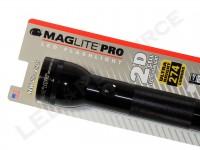 As we have already seen with the Mini Maglite Pro and Pro+, classic simplicity and modern power define the Maglite Pro series. In this review, we’ll be taking a look at the full-sized member of this family, the single-output Maglite Pro 2D LED. Using two D-cell alkaline batteries, which is the only battery configuration offered, the Pro 2D LED has a maximum output of 274 lumens and intensity of over 33,000 candela.
As we have already seen with the Mini Maglite Pro and Pro+, classic simplicity and modern power define the Maglite Pro series. In this review, we’ll be taking a look at the full-sized member of this family, the single-output Maglite Pro 2D LED. Using two D-cell alkaline batteries, which is the only battery configuration offered, the Pro 2D LED has a maximum output of 274 lumens and intensity of over 33,000 candela.
Key Specifications
- Output: 274 lumens
- Intensity: 33,560 candela
- Runtime: 12h 45min
- Battery: 2 x D-cell
- Length: 10.0″
- Diameter: 2.25″ bezel, 1.6″ body
- Weight with Batteries: 23.0 oz.
- Warranty: Limited Lifetime with $12 Handling Fee
- MSRP: $39.99
Pricing & Contents
MSRP for the Maglite Pro 2D LED is $39.99, and the light is only available in black.
Included in the blister packaging are: Maglite Pro 2D LED Flashlight and user manual.
Batteries
The Maglite Pro LED is only offered with a single battery configuration, which is the compact 2D-cell version. With electronic circuitry and LEDs making large D-cell lights obsolete, this product line simplification doesn’t really surprise us (the only difference between the Maglite LED 2D-cell and 3D-cell lights is runtime).
The Light
The Pro 2D is a variant of the D-cell Maglite, and standard D-cell Maglite accessories such as traffic wands and mounting brackets will work with the Pro 2D. As with most Maglites, the aluminum body is type-II anodized.
Head
The head features a plastic window and a smooth reflector. Optimal focus can be achieved by twisting the head.
Body
Knurling on a section of the body provides grip for the light.
Tail Cap
The flat tail cap allows the Pro 2D to tail stand.
Performance
Using a Cree XP-G LED, the Maglite Pro 2D LED is rated for 274 lumens. The Pro 2D has a larger hotspot than the standard D-cell lights, which makes the increased output of the Pro 2D less obvious. Beam pattern of the Pro 2D is artifact-free at optimal focus, but holes and rings quickly appear if the light is defocused.
When activating the Pro 2D, the light does not turn on immediately and has a quick, but noticeable, “fade-in” effect like the XL100.
Runtime
If you haven’t read our article about runtime graphs and the ANSI FL1 Standard, please click here.
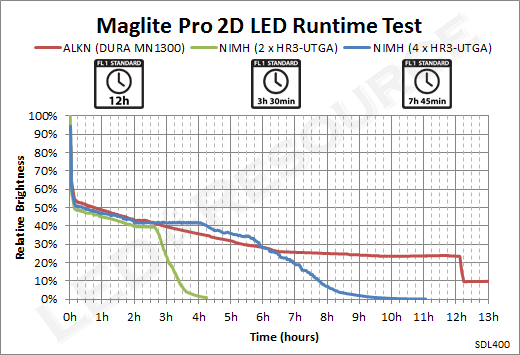
Maglite uses step-down regulation, which reduces the Pro 2D’s output to 60% during the first 12 minutes of continuous operation. When used with two NiMH AA batteries (in D-cell adapters), runtime is reduced but performance is roughly the same for the first 2h 30min.
Conclusion
While the Maglite Pro 2D LED combines modern performance with the classic D-cell flashlight, this might actually be a drawback – we can’t think of any other modern device that uses D-cell batteries. The availability of rechargeable NiMH and energy-dense lithium-ion batteries, combined with the obsolescence of other D-cell electronics (such as large radios and cassette players), has largely decreased D-cell usage. Even obtaining alkaline D-cells for use in our runtime test, given our budget (or rather the lack thereof), proved to be challenging since the packaging doesn’t include batteries.
Of course, using D-cells isn’t specifically a problem with the Maglite Pro 2D, but it is definitely a factor to consider. There are many advantages of a larger-sized light, such as being easier to grip, but large lights don’t necessarily have to be heavy. For most of our testing with the Pro 2D, we used Sanyo Eneloop AA’s in plastic battery adapters, and when used with adapters that take two AA’s in parallel, battery weight is halved and runtime is still more than sufficient. If you are considering a full-sized flashlight, we would definitely recommend purchasing a couple adapters to have the option of using AA’s.
| Pros | Cons |
|
|
Related Links

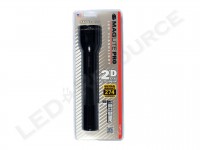
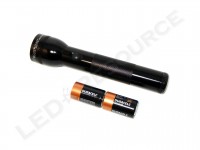
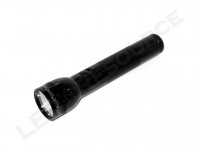
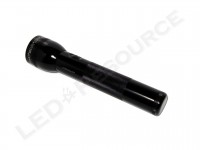
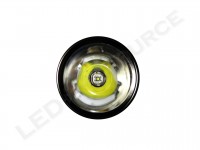
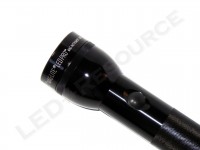
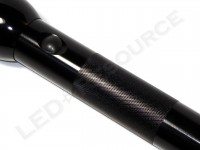
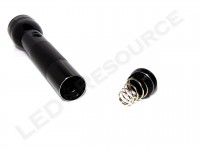
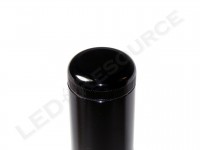
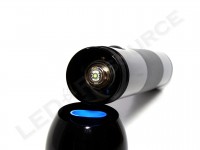
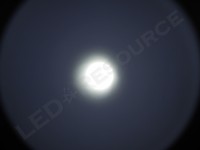
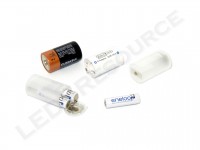
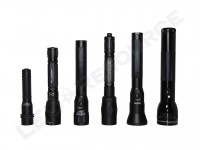


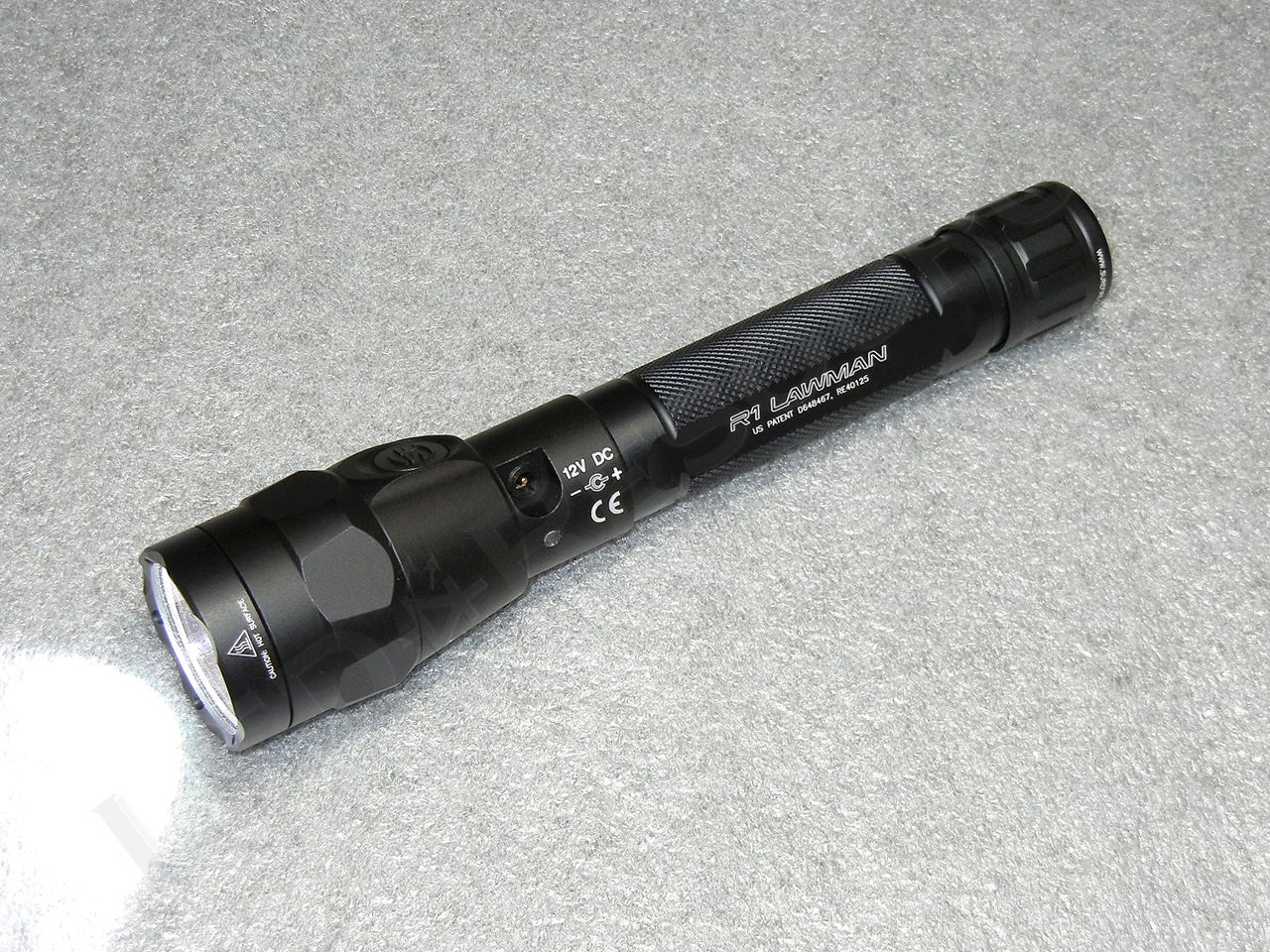
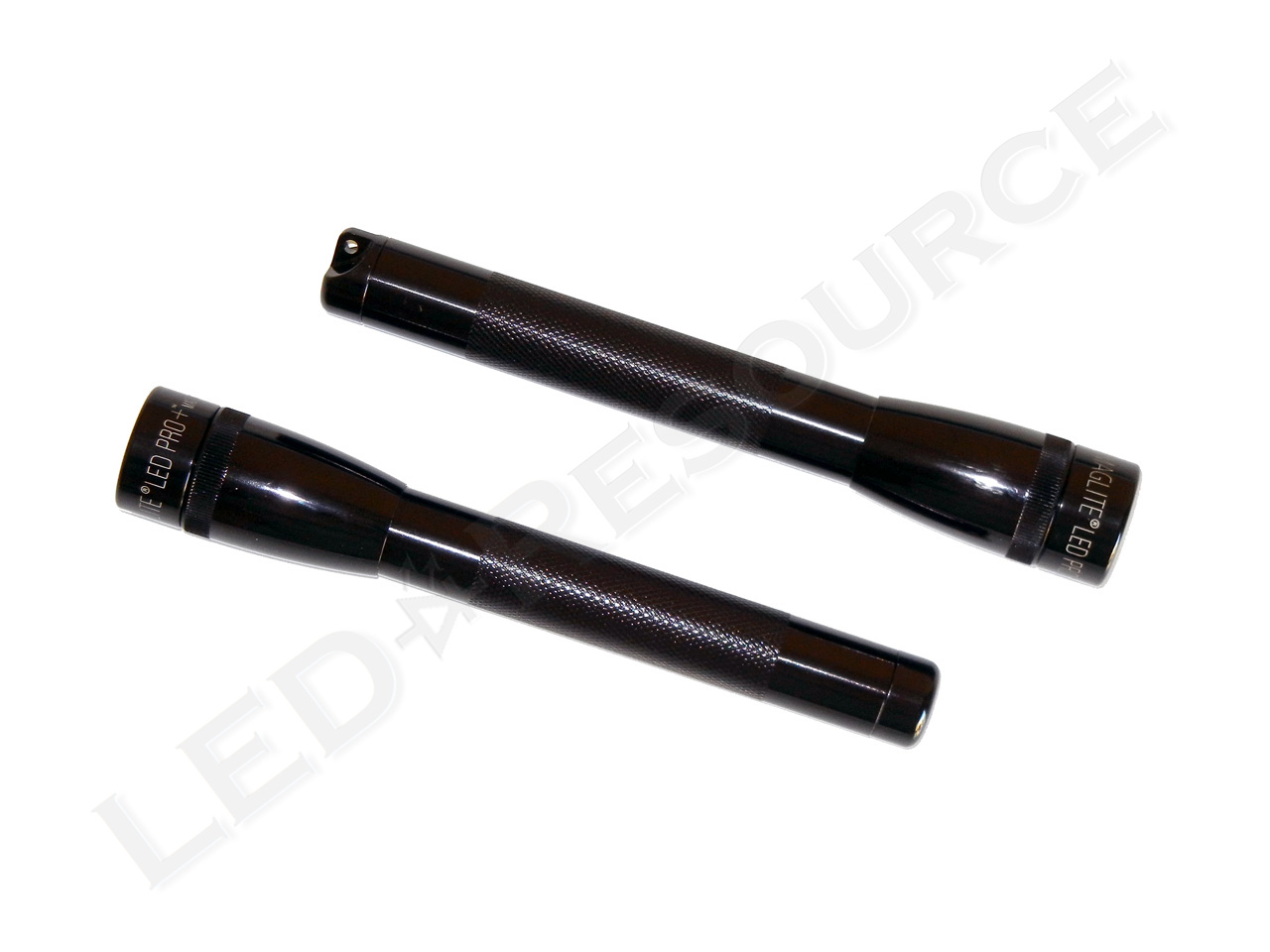
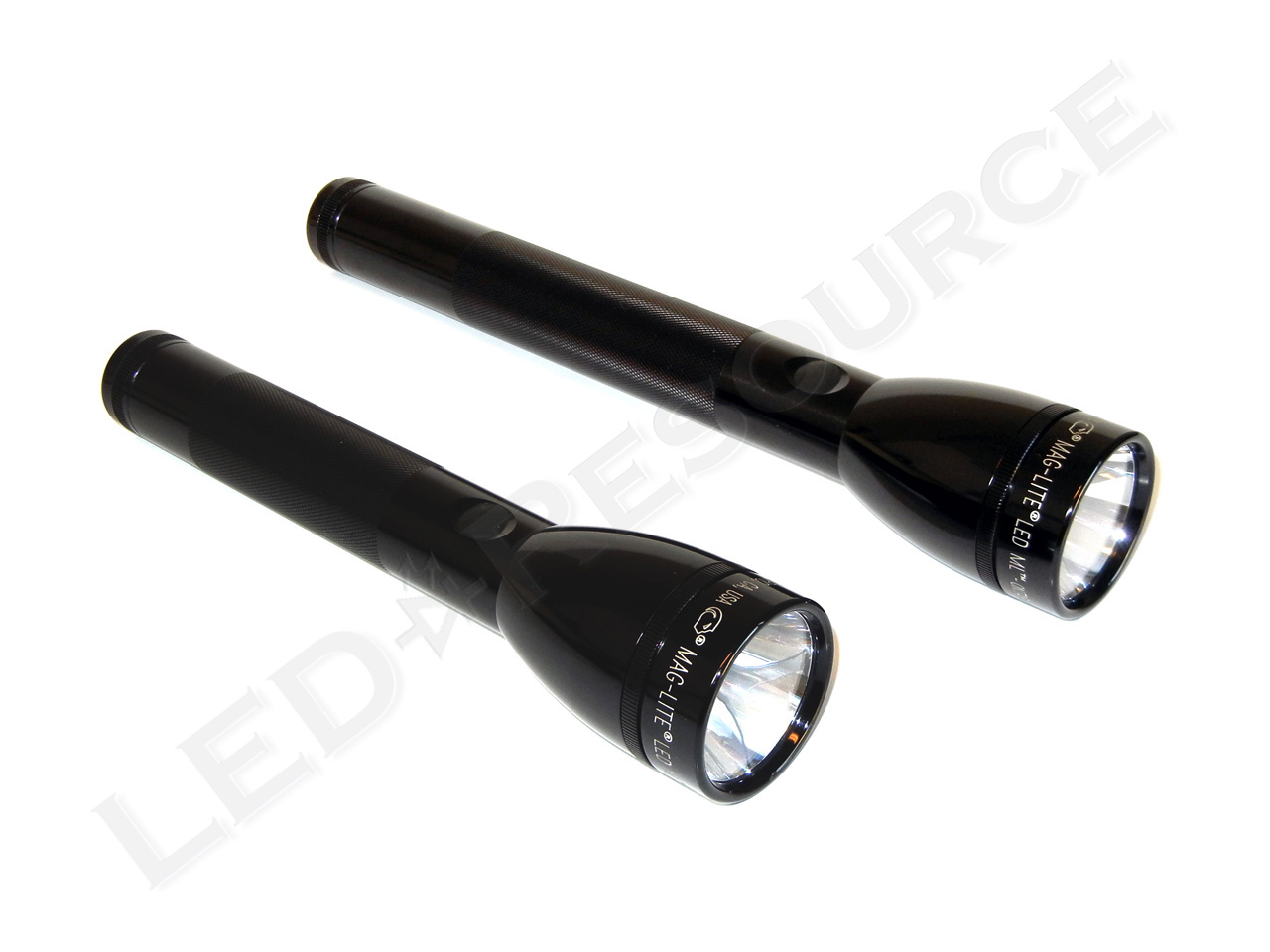

How long does the soft start take to reach full output? Personally I’d think this would be a good feature so you don’t blind yourself upon turning it on 😛
Studd,
It’s only a split second, but enough to be noticeable.
Robin
Where did you get those 2AA to D adapters?
Thank you.
Joe,
I bought them from an international seller on eBay for about $1/ea.
Robin
10,000Ma Rechargeable NiMH “D” Batteries are available on line.
and thy last a lot longer then “D” alkaline
I had two led mag-lites, the 3 D-cell and the 2 D-cell, both quit with only a few hours use. They went very dim. They are garbage, what a waste of money.
I question just how “regulated” Maglites are. I just bought a Maglite Pro 2D, and I’ve done some current testing. With full voltage (anything 3 volts or over), the light runs at about 1-1.05 amps. but once the voltage of each battery dips to 1.4 volts or lower (anything below 2.8 volts total), the light becomes noticeably dimmer after a few seconds, and current drops to anywhere between 0.5 to 0.7 amps. Now it does stay regulated at certain intervals, but…my point is that I want full brightness every time I turn it on. With batteries running at 1.3 or 1.4 volts each, I should be getting full brightness with a “regulated” light. Most places online insist that this light should be giving off 274 lumens for at least a few minutes once it’s turned on. I don’t mind that it drops to 40% – 50% after continuous use, as long as it gets back to 100% once I power cycle it. But the current readings I got from it seem to say otherwise. Why the heck is this? Honestly this is going back to Walmart if this happens with some fresh batteries (gonna buy some more soon).
Thanks for your review. Maybe I expect too much, but the brightness line in your plot for Duracell batteries looks none-too-flat for a flashlight that’s supposed to “regulate” it’s power. Also, Darth Vader’s comments concern me. Can you confirm them? Can you show “initial” brightness levels (first 12 minutes) after 1, 2, 3 hours of use, etc?
Correct me if I’m wrong, but I thought one big disadvantage of rechargeable batteries is that they lose their charge over just a few months (when not being used). In contrast, I know non-rechargeable batteries can hold their charge for several years. I’m looking for a new emergency flashlight for my car which, knock-wood, will never be used. But if I should need it, I want it to turn on. And I don’t want a new recharge task that I have to perform every few months to ensure that that does indeed happen. This is why I was looking at flashlights that use non-rechargeable batteries.
Furthermore, D-Cell batteries, being larger than, say, AA batteries, contain far more chemical energy. They can drive bigger loads than a AA, or the same smaller load for a longer time. Comparing the product data sheets of a Duracell D to a Duracell AA ( http://ww2.duracell.com/en-US/Global-Technical-Content-Library/Product-Data-Sheets.jspx?icn=Prim/PrimNav/Product-Data-Sheets&cc=Primary ), you can expect that a D Cell will last 5 times longer than a AA for the same load. (Compare the 250 milli-watt constant-power performance plots.) Furthermore, D-Cells only cost about 3 times as much money, so they are actually more cost-effective than their AA counter-parts. For these reasons, I was considering a flashlight using old-fogey D-Cell batteries, but sporting new-fangled LEDs and electronics.
So anyway, I’m skeptical that your dismissal of devices that run on non-rechargeable D-Cell batteries is either completely fair or warranted.
Given my needs, can you suggest a better flashlight for me? (I’m trying to keep it under 50-ish dollars.) Thanks!
Matt
Matt,
Regulation does not necessarily mean constant output. It just means that the output is controlled, which in this case is step-down. I don’t have any more D-cells to conduct additional testing, but we’ve done similar tests with the XL200 and ML100. As long as the battery can sustain the load, cycling the light at 15 minute intervals will reset the step-down regulation.
Newer rechargeable batteries are low self-discharge, and for example, the Sanyo Eneloop LSD NiMH can retain 75-85% charge after three years. If you kept the light in your car and didn’t use it, I would recommend charging it every year.
One of the biggest problems of alkaline batteries is leakage. This risk means you should not depend on them working after being stored (especially in a car, where the temperature could vary from very cold to very hot), and in most cases of leakage, the batteries will get stuck.
Comparing the 250mW charts is not representative of the load presented by a high-output flashlight. For the Pro 2D, you can expect about 3W of power (it’s a very rough estimate, but sufficient to illustrate the point), which means that each battery needs to deliver 1.5W. Take a look and see if they have charts for 1.5W constant power or 1.5A constant current. Alkaline batteries perform poorly with high current/power draw, so you may not even be able to find a chart for the AA.
I was actually comparing alkaline D-cells to rechargeable AA, which further skews the comparison. Even though alkaline D-cells have a “longer” runtime, voltage is poorly maintained at high discharge rates, which adversely affects regulation and results in reduced output. NiMH batteries perform much better than alkaline at high currents, so alkaline batteries are best for low current applications (such as a clock or TV remote).
For comparison, here’s the datasheet for the Sanyo Eneloop AA (HR-3UTGA) LSD NiMH:
http://us.sanyo.com/dynamic/product/Downloads/HR-3UTGA-2010-35936786.pdf
If you want a dependable emergency solution, my recommendation would be to choose a light that can take lithium primary batteries (like the Energizer Ultimate Lithium). You could get a Mini Maglite Pro/Pro+, or use AA adapters in the Pro 2D. Lithium batteries are leak-free, perform well at temperature extremes, and perform much better than alkalines.
Hope this helps clarify.
Robin
I have an old Maglite 3d cell light that about three years ago I put a led bulb in. Don’t remember the lumens, but only change batteries every 18mo or so, it last longer than the chart above. Any info on this bulb was sold by Mag Light, don’t know if you can still buy them as I haven’t needed another.
Robin, the thing is the light, running on 2 alkaline D cells that measured about 1.4 volts each, totaling 2.8 volts, would noticeably dim only a few seconds after turning the light on. For me, I don’t see that as being regulated at all. I understand step down regulation. Either the 2D PRO is not regulated, or it steps down within 5 seconds if the battery voltage is at 1.4 volts. If this is their idea of regulation, then I would simply never buy a Maglite. I just want a light that maintains constant brightness as long as the battery voltage isn’t too low. Step down regulation isn’t a big deal, but like I said, even this 2D PRO was “stepping down” after only a few seconds. That’s pretty lame if you ask me.
Based on our tests, the programmed step-down is to 75% after 3 minutes and stabilizes after 5 minutes.
Keep in mind that voltage is not a good indicator of capacity for alkaline batteries. If the light is dimming after a couple seconds, you might want to try another set of batteries.
Robin
This is a nice review, and the graphs are very helpful! With influence from the reviews on this site, I’ve recently purchased a 3D, 2D and 2D pro for the house and two cars respectively.
I have to say, after playing around with all of the lights for a couple hours, I really can’t see much of a difference between the 2D and 2D pro, light output-wise. I was expecting a much bigger difference, since the pro is rated at twice as many lumens. I think the 3D, being rated at 80+ hours runtime with pretty much the same lumens as the 2D, is far and away the best light of the bunch (and cheapest, from my experience, too!)
Anyway, that’s my 2 cents. Keep posting these great reviews!
Robin, I understand voltage is not always a good indicator of how much juice is left. But I’m saying that the batteries work well for the first couple of hours of total use. But after that, the light dims after only a few seconds. I’m not asking for EXACTLY 274 lumens every time the light is turned on, but certainly for the first few hours of use, as long as you power cycle the light, it should return to full brightness. It doesn’t.
I’ve also tested the current at the tailcap. If I recall correctly, the current is 1 ampere, but after that couple of hours of use, I’d power cycle the light (i.e., I left it off for about 20 minutes and turned it back on), and it started off at 1 ampere (or whatever it’s supposed to be), but it quickly (within 20 seconds) drops down to 0.8, 0.7, etc. amperes.
I wish you’d show a lumens vs. time graph after power cycling a few times, like you guys did with the MAGTAC. To me, this is not “regulation”.
Hi Robin. Thanks… I really enjoy the insights provided by your reviews and have bought a couple of flashlights as a result. Are you going to review the new Maglite 3rd Generation flashlights any time soon? Cheers.
Tony,
They’re not currently in our backlog (although there is a Maglite in there!), but we may review them at some point. There are many similarities between the Maglite 3rd Generation LED lights and the MagCharger LED, so if you haven’t read that review, I would recommend taking a look.
Robin
I bought the 2 D LED, Serial number starts with DL.
Don’t know what screwy engineer thought this one up with the voltage regulation. I get excellent light for about 15 minutes or less. After that, it goes really really dim for a few minutes then shuts off. After about 5 minutes it will go back to full brightness then dims again and then shuts off. I checked the battery voltage and each battery was at 1.466 volts when it went into the twilight mode. Considering the alkaline batteries start out at 1.5 volts, you won’ t have much run time on a new set of batteries.
Customer service people were nice but I don’t need an explanation as to why it does that. Don’t waste your money on the 2D led with voltage reg. It doesn’t work and other people are telling you it doesn’t work. The light isn’t a total waste though, I understand you can cut the aluminum tube right behind the switch, drill and tap the end cap to 1/2×28, and make a suppressor out of it. Or, you can punch out the lens and guts out of it and make a decent funnel.
I bought 8 2D LEDs when they were on sale at Home Depot. Half of them have failed in the first year – the LED looses about half intensity. So I look at the Maglite Lifetime warrantee – “Pack up the flashlight and include a check or money order for $15”! What? They must be crazy! That’s not a warrantee. I’m paying for them to correct their crappy design!
Don’t buy a Maglite. There are a lot of less expensive, high performance LED flashlights out there. And the Maglite employees all have there Teslas.
As far as their lifetime warrenty. I took my flashlight to the factory service center in Ontario because I could not open it to change the batteries.The first thing the guy asked me what what kind of batteries were in the flashlight. When I asked him why he said if they were Duracell batteries there was no warrenty.I told him I really didn’t remember what kind of batteries were in the flashlight. And I never heard that the brand of battery would effect the warrenty. Really ! I didn’t see that on the package when I purchased the flashlight. I don’t think I’ll be buying anymore Maglites in the future